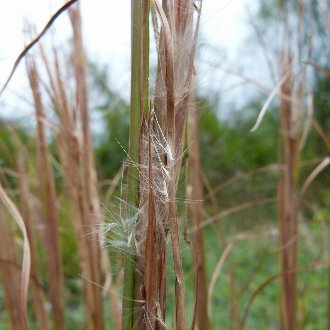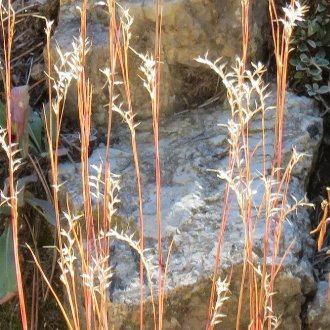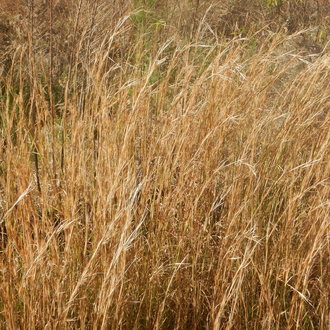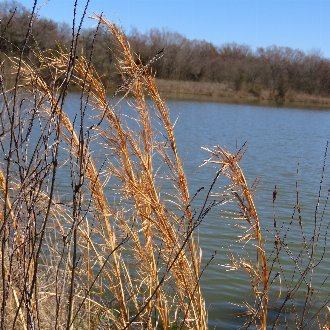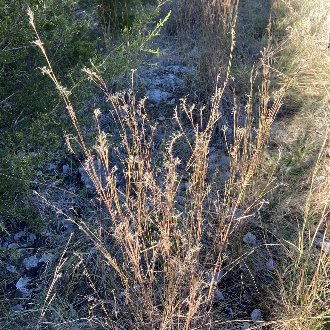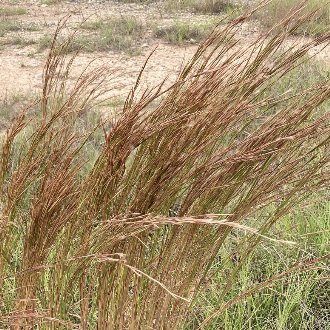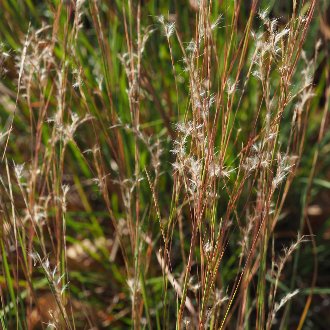Broomsedge Bluestem vs Little Bluestem
This guide is under construction and has not been published yet. It may have errors. When in doubt, double-check other sources for definitive ID.These plants are visually similar and can occur together in the same habitat, and have a large area of range overlap (nearly the entirety of broomsedge's range.) They can be distinguished with ease by close examination of their stems and seeds, and they also have differences in color and growth habit that can lead you to tell them apart at a glance and from a distance. In the east, little bluestem becomes less common and more restricted to specific habitats, especially dry habitats with specific adverse soil conditions. Both can occur in disturbed habitats, but broomsedge is more limited to highly disturbed and early-successional habitats whereas little bluestem is more likely in more stable habitats.
Broomsedge Bluestem (Andropogon virginicus) | Little Bluestem (Schizachyrium scoparium) |
A perennial grass native to eastern North America, an early colonizer of open, disturbed sites. | A bunchgrass native across North America, one of the main components of tallgrass prairie but also found widely in other habitats. |
Stems are mostly hidden by overlapping, flattened sheaths. Seedheads are partly enclosed in a spathe (leaflike structure). Photo © botanygirl, CC BY 4.0. | Both stems and seedheads are exposed, not enclosed in any structure. Photo © Marilynn Miller, CC BY 4.0. |
Dormant foliage usually orange to golden in color. (Photo from December when color is fully changed.) Photo © Ryan Watson, CC BY 4.0. | Dormant foliage more reddish in color. (Photo also from December) Photo © CK Kelly, CC BY 4.0. |
Stems may stay upright, but often lean, with the upper portion of the plant curving considerably. When they do lean, stems may lean in different directions, but are more likely to lean in the same direction. Photo © Annika Lindqvist, CC BY 4.0. | Stems are more likely to stay upright, not leaning or curving at the top. When they do lean, they are more likely to lean outward from the clump in different directions. Photo © WCD Staff, Public Domain. |
Foliage turns temporarily red in fall, plants are usually green at the base and seed has not yet been released when they turn red. (Photo from late October in Louisiana) Photo © John Michael, CC BY 4.0. | Foliage also turns temporarily red in fall, but tends to turn later. Seed matures and some is often released into the wind while foliage is still green. (Photo from Early October in Virginia) Photo © mefisher, Public Domain. |
References & External Resources
These short lists show only links helpful for ID. For a complete list of references and resources also covering other aspects of ecology, visit the links section of the full article on each plant, which is the first entry here.



